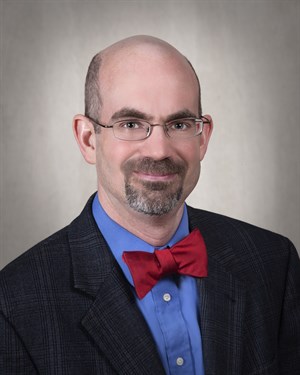Texas A&M Professors Granted $1.2 Million To Enhance Diversity In Neuroscience
Story by Megan Myers, CVMBS Communications

A five-year grant of more than $1.2 million from the National Institutes of Health (NIH) will promote diversity in the field of neuroscience by supporting diverse, research-intensive communities at Texas A&M University.
The grant will be used to create a Neuroscience Research Leadership Program modeled on the successful Aggie Research Program (ARP). Dr. Christopher Quick, a professor at the Texas A&M College of Veterinary Medicine & Biomedical Sciences (CVMBS) and executive director of the ARP, will be leading the program along with Dr. Mike Smotherman, a professor in the Texas A&M Department of Biology and Chair of the Texas A&M Institute for Neuroscience.
“This grant is trying to fill a very important need in the biomedical sciences—there’s a lack of diversity and it’s one of those really tough problems to solve,” Quick said. “The value of it is very clear, in terms of being able to capture all of the perspectives that people come in with. That can change not only how people do research but what they do research on.”
The grant will fund three postdoctoral fellows from underrepresented backgrounds each year, who will each mentor a community of 12 graduate students. Because each of these graduate students leads a research team of four undergraduate students, in the five years of funding, the grant will provide opportunities for approximately 15 postdocs, 180 graduate students, and 720 undergraduates as they perform neuroscience research.
At Texas A&M, neuroscience is not a single department but a multidisciplinary program that includes faculty and students from eight colleges; this aspect, according to Quick, means the program is already set up to embrace diversity at Texas A&M.
“This is a very different approach to creating a diversity program. It’s promoting diversity by expanding opportunities for everyone and tearing down barriers that impact some more than others,” Quick said. “Postdocs from underrepresented groups will be in charge of things and they’ll be creating opportunities. They’ll be models, not just for other underrepresented folk, but for everyone.”
The widely popular ARP was created by Quick in 2016 to prepare graduate students and postdoctoral scholars for the leadership roles they will play in the next stage of their careers.

“This is a very different approach to creating a diversity program. It’s promoting diversity by expanding opportunities for everyone and tearing down barriers that impact some more than others.”
-Dr. Christopher Quick
Quick discovered that the ARP model not only increased the number of undergraduate research opportunities but also diversity on research teams.
“In the Aggie Research Program, 41% of our undergrads are from underrepresented groups. That 41% precisely matches the percentage of our undergrads at Texas A&M who are from an underrepresented group,” Quick said.
By opening the Neuroscience Research Program to undergraduate and graduate students from all units across the university, he expects to see a similar level of underrepresented student participation.
Funding for the first group of postdocs has already begun, and Quick and Smotherman plan to continue to expand the program by creating a graduate-level class on teaching and leading inclusive research teams.
“The graduate students could start off with a class on how to teach course-based undergraduate research experience, or CURE, to figure out how to do this,” Quick said. “The number of leadership opportunities this program will create is expected to be large, and the number of undergrad research opportunities is expected to be very large. That’s what’s exciting for me.”
The postdocs who are funded by the grant will also serve as directors to learn how to run the program, a skill they can then take with them to other universities and institutions.
By helping lead successful, diverse research teams, they will also experience the value of diversity first-hand and take that knowledge with them into their future careers.
“Everyone here has something inherently different and unique about themselves. They have something to offer, and when we work together, we can solve problems we couldn’t solve by ourselves,” Quick said. “The totality of each individual’s needs, perspectives, background, skills, and goals makes a research team more productive.”
###
For more information about the Texas A&M College of Veterinary Medicine & Biomedical Sciences, please visit our website at vetmed.tamu.edu or join us on Facebook, Instagram, and Twitter.
Contact Information: Jennifer Gauntt, Director of VMBS Communications, Texas A&M College of Veterinary Medicine & Biomedical Sciences, jgauntt@cvm.tamu.edu, 979-862-4216


